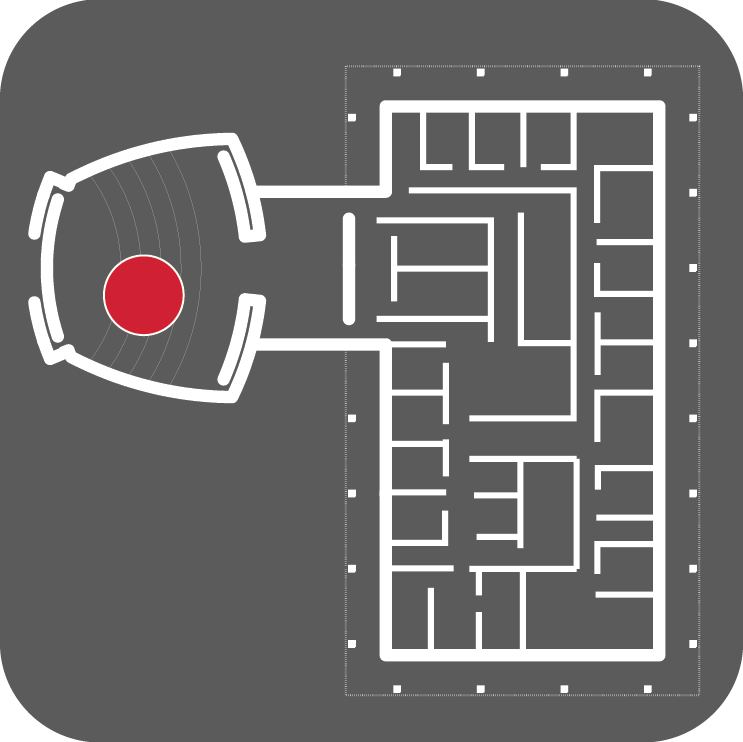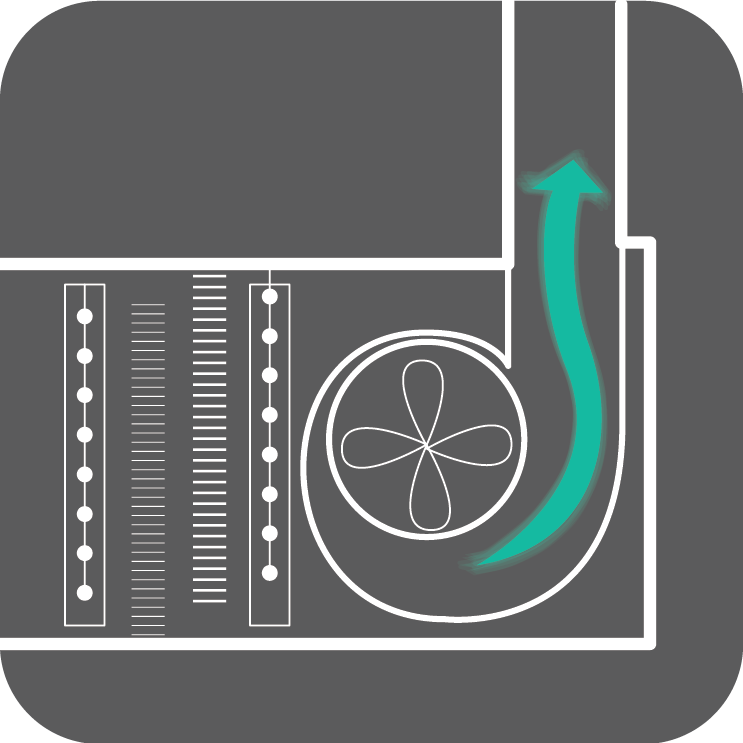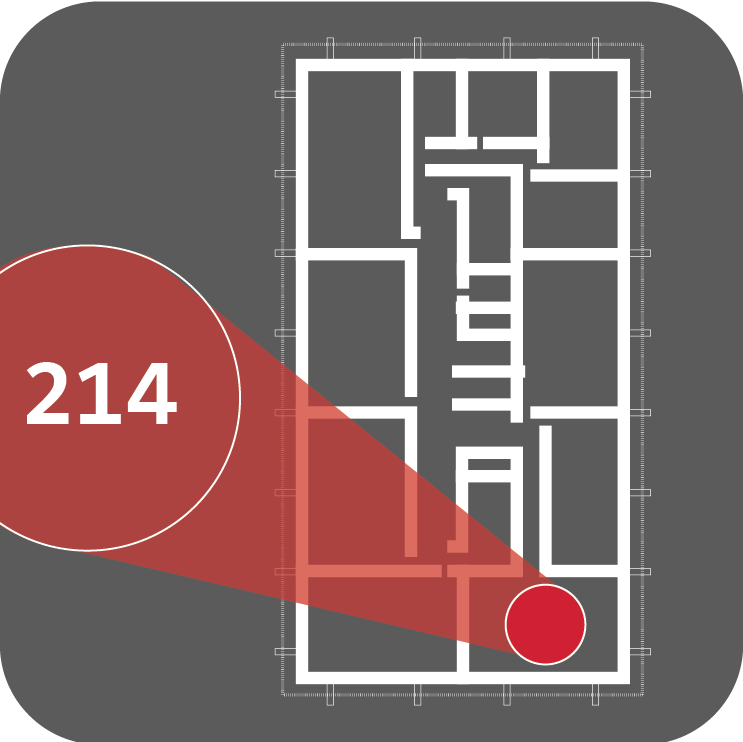







Ventilation
Scaife Hall has 4 air handling units (3 on the subfloor, and 1 in the penthouse). One of the AHUs on the subfloor supplies for the auditorium space and part of the first floor. The AHU in the penthouse supplies for the 3rd and 4th floors. The AHU are constant air volume (CAV) units using a single zone. The AHU that supplies the basement is a variable air volume (VAV) unit.
Two of the AHU installed in Scaife Hall are Trane M-Series Climate Changer Air Handlers which are prepackaged units. The AHU handling the first floor and auditorium is a Johnson Controls YORK Solution XT unit. The system also contains Yaskawa Z1000 Bypass units that allow the motors to continue running by supplying electricity directly to the motors in the event of a drive failure. This ensures that units can still supply air.
Heating/Cooling
The classrooms are heated and cooled using fan coil units placed along the rooms’ perimeters. The fan coil units operate by moving air around hot and chilled water pipes controlled by a pneumatic system adjusting the valves. The pneumatic system is controlled by electric signals form digital thermostats in each room. The fan coil units have 4 settings: high, medium, low, and off.
Hot water is supplied from the campus steam plant. Eight electric centrifugal chillers on campus provide the chilled water. The chillers provide 6,000 tons of cooling.Lighting
The lighting in Scaife Hall was recently upgraded to Biax lamps (compact fluorescent lamps) for energy efficiency. The Biax lamp replaces the typical T5 fluorescent and features a loop of fluorescent tubing with a 4-pin base. The lamps, created by GE, use around 100 lumens per watt with a CRI of 82. The fixtures fit into the current acoustical ceiling tiles and feature a reflective 2 x 2 recessed centerbasket system.
The majority of the windows on Scaife Hall are inoperable,but allow in large amounts of daylight in the perimeter rooms.Acoustics
In many classrooms, acoustical tiles and wall coverings are installed to help prevent the transmission of sound between walls as well as to minimize sound echoing back off of the hard surfaces.
Building Controls and Diagnostics - Carnegie Mellon University, 2014
Katrini - Kolosky - Ranttila